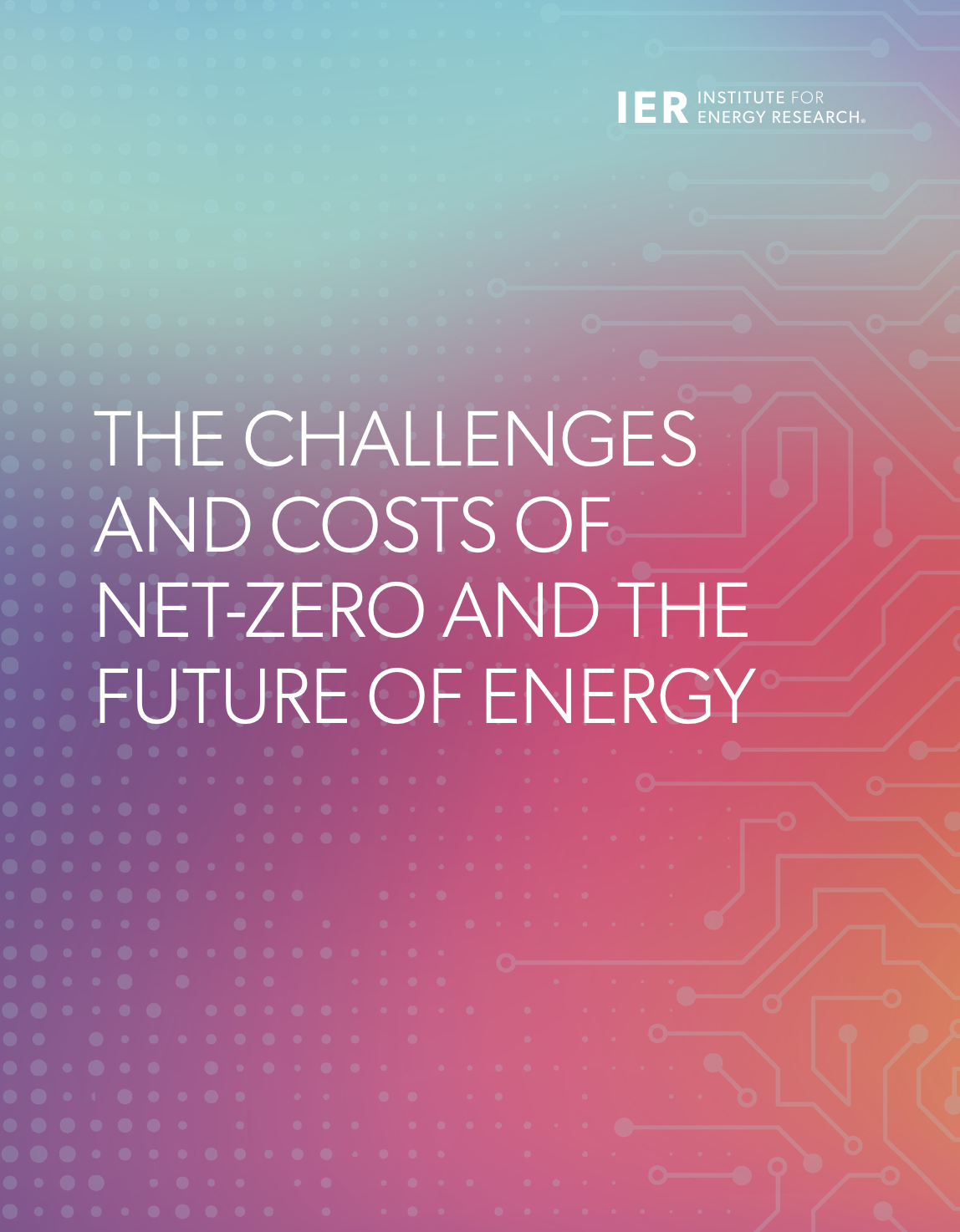Around the world, governments, activists, and researchers have begun to converge on the idea that reaching “net-zero” carbon dioxide (CO2) emissions is a minimum requirement of adequate action on climate change. The targets for achieving net- zero are set several decades into the future with much fanfare, but the actual steps required to reach such targets, and the impacts of those steps, are rarely discussed. This paper seeks to fill that information gap with what net-zero really means for the United States and its energy future.
Download a copy of The Challenges and Costs of Net-Zero and the Future of Energy
In the U.S., discussions from advocates for action on climate change usually begin with the premise that the U.S. is “behind” or “not taking action” to reduce CO2 emissions. The reality is that such concerns about the U.S. are misplaced – and were misplaced long before the passage of the Infrastructure Investment and Jobs Act (IIJA) and the Inflation Reduction Act (IRA) – recent legislation touted as historic action on climate. The U.S. was already a climate leader long before the IIJA and the IRA became law.
- From 2000 to 2021, CO2 emissions in the European Union (EU) fell by 22 percent. In the U.S., they fell by 17 percent. However, the population of the U.S. grew by 18 percent, while the population of the EU only grew by only 4 percent. As a result, per capita CO2 emissions fell over 30 percent in the U.S. versus only 25 percent in Europe.
- Arguably the most important metric is the absolute change in carbon emissions. From 2000 to 2021, the U.S. reduced more carbon emissions than Europe: a 275 million metric ton reduction of carbon for the U.S. compared to a 221 million metric ton reduction of carbon for the EU.
But even as the U.S. has substantially reduced CO2 emissions, it is still a long way from reaching net-zero by any definition. This indicates that reaching net-zero, or anything close to it, will be a massive undertaking. Absent unforeseeable technological breakthroughs, likely nothing short of a massive reordering of how society uses energy will be required.
- A widely stated study on achieving net-zero CO2 emission reductions is titled “Net-Zero America: Potential Pathways, Infrastructure, and Impacts” (Net-Zero America) from the Andlinger Center for Energy and the Environment at Princeton University.2 In all of the study’s net-zero pathways, fossil fuel use declines in the U.S. energy mix by at least 62 percent in the next 30 years.
- However, from 1990 to 2021, fossil fuel use only fell by 7.1 percent, from producing 85.6 percent of total primary energy consumed in the U.S. to 78.7 percent of total energy consumed.
- Achieving any of the net-zero pathways in Net-Zero America requires heroic assumptions about land use, coal use, sales of electric vehicles (EVs), and construction of new generation and infrastructure. Achieving any one of these assumed target values would require massive, unprecedented, and rapid change. Hitting net-zero would require all these unprecedented targets to be achieved.
Another recent study on net-zero was conducted by the Energy Policy Research Center (EPRINC), which examines the impacts of net-zero on oil and gas investment and is a useful complement to this paper for those seeking another element of this issue.
To reach a net-zero goal, a massive buildout in renewables generation, new conventional generation, infrastructure, and EVs would be required. This, in turn, would require significantly more mineral and material resources than the current conventional energy and vehicle technologies that we rely on today. This switch from an energy system dominated by hydrocarbons to one that relies primarily on minerals and processed materials would have far-reaching implications.
- The International Energy Agency’s (IEA) “sustainable development scenario” results in a 42-fold increase in lithium demand, a 25-fold increase in graphite demand, a 21-fold increase in cobalt demand, a 19-fold increase in nickel demand, and a 7-fold increase in rare earth demand by 2040.3
- There are simply not enough minerals in the pipeline to meet this kind of demand. One example of this is shown by research done by EV expert Steve LeVine. Using major metals production forecasts, LeVine found that by 2030, there will only be enough metals for 15.6 million EVs, while automakers claim they want to produce over 40 million.4
- While there are massive minerals and material needs from net-zero technologies, the Biden administration has not expedited any mines and has slow-walked or been hostile to new mining projects such as Resolution in Arizona, Twin Metals in Minnesota, and Ambler Mining District in Alaska.
Even if the materials challenges can be met, attempting to achieve net-zero will result in massive damage to the American economy.
- According to the Heritage Foundation’s clone of the National Energy Modeling System (NEMS), the impacts of net-zero would be so severe that the Department of Energy’s (DOE) own model is unable to estimate the impacts – the model crashes before it gets there.
- At just the halfway point on the way to net-zero, aggregate GDP drops $7.7 trillion, employment shortfall averages 1.2 million jobs, average annual household electric bill increases $840 (in 2017 dollars), and gasoline prices rise 236 percent.
Attempting to achieve net-zero will require wrenching change. The already substantial, world-leading CO2 emissions reductions made by the U.S. are only a fraction of what would be required. Rapid and unprecedented reordering of American energy production and use would have to happen along with huge increases in mineral production. The economy would be severely damaged. And even with all that, achieving net-zero still requires dubious assumptions and projections about future technology and behavior that likely make net-zero an impossible near-term target. Understanding these challenges and costs at the outset must inform policymakers before they pursue any version of a net-zero target.




